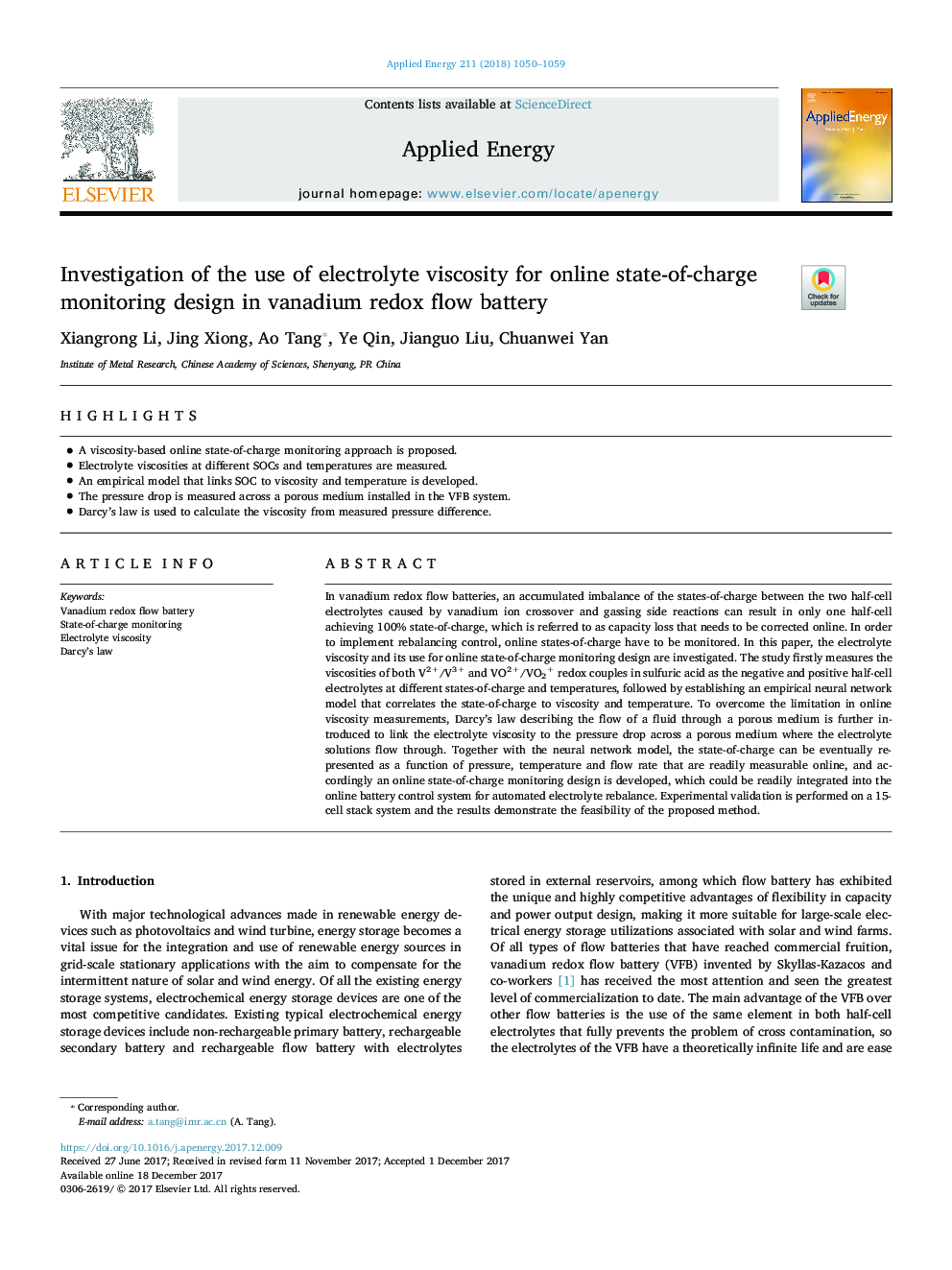| Article ID | Journal | Published Year | Pages | File Type |
|---|---|---|---|---|
| 6681457 | Applied Energy | 2018 | 10 Pages |
Abstract
In vanadium redox flow batteries, an accumulated imbalance of the states-of-charge between the two half-cell electrolytes caused by vanadium ion crossover and gassing side reactions can result in only one half-cell achieving 100% state-of-charge, which is referred to as capacity loss that needs to be corrected online. In order to implement rebalancing control, online states-of-charge have to be monitored. In this paper, the electrolyte viscosity and its use for online state-of-charge monitoring design are investigated. The study firstly measures the viscosities of both V2+/V3+ and VO2+/VO2+ redox couples in sulfuric acid as the negative and positive half-cell electrolytes at different states-of-charge and temperatures, followed by establishing an empirical neural network model that correlates the state-of-charge to viscosity and temperature. To overcome the limitation in online viscosity measurements, Darcy's law describing the flow of a fluid through a porous medium is further introduced to link the electrolyte viscosity to the pressure drop across a porous medium where the electrolyte solutions flow through. Together with the neural network model, the state-of-charge can be eventually represented as a function of pressure, temperature and flow rate that are readily measurable online, and accordingly an online state-of-charge monitoring design is developed, which could be readily integrated into the online battery control system for automated electrolyte rebalance. Experimental validation is performed on a 15-cell stack system and the results demonstrate the feasibility of the proposed method.
Related Topics
Physical Sciences and Engineering
Energy
Energy Engineering and Power Technology
Authors
Xiangrong Li, Jing Xiong, Ao Tang, Ye Qin, Jianguo Liu, Chuanwei Yan,
